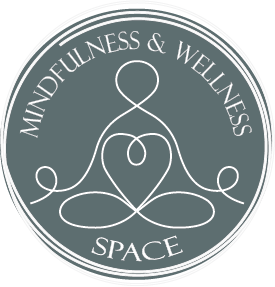CONTACT ME
Address:
The Aviary, Bacton Road, North Walsham, Norfolk NR28 0RA
Email:
mindfulnessspace.info@gmail.com
Mobile:
07971 808162
Send me a message
SOCIAL MEDIA

FREQUENTLY ASKED QUESTIONS
Your Title Goes Here
Your content goes here. Edit or remove this text inline or in the module Content settings. You can also style every aspect of this content in the module Design settings and even apply custom CSS to this text in the module Advanced settings.
What is meditation?
Meditation is the focus or concentration of the mind on a single object. That object can be a person, place, thing, emotion, thought, colour, or anything else that one chooses to concentrate on. As we learn to look inwardly instead of externally, we begin to explore the inner realm of the mind and we can begin to experience mental, emotional, and even physical changes. The objective of meditation is to watch, become aware, and master the mind in order to experience and get in touch with the stillness and inner peace that is within all of us.
What are the benefits of meditation?
Common benefits of meditation are a sense of inner peace, tranquillity, calm, patience, happiness, pure joy, deeper self-knowledge and understanding, emotional balance, and an enhanced ability to deal with and manage stress. Meditation works internally to wipe away all the gunk and grime that has been collecting in our minds over the course of our lives and, as our understanding and awareness of the mind deepens, we can begin to feel a greater appreciation, love, and compassion for life. With prolonged, consistent, and dedicated practice, it is common for people to experience a new-found connection to themselves, all living things, and the universe.
What is the correct posture for meditation?
In Eastern traditions, meditation is usually done in the lotus or half-lotus posture where a person’s legs are crossed while sitting on a cushion close to the floor. However, this is not realistic for everyone, and many Westerners feel uncomfortable sitting like this for extended periods of time. Solution: sit in a chair or anywhere else where you can stay comfortable! The main point is to keep your back straight, neck straight, chin slightly down, feet on the ground, and arms comfortably positioned on knees or thighs. This will allow you to breath comfortably and inhale fully. Some people prefer to meditate lying down but this position is not recommended for beginners because of the high likelihood of falling asleep. A proper position should also encourage mental alertness and physical relaxation.
What should I wear while meditating?
Comfortable, soft clothing is preferred. Depending on your posture and how you are sitting, loose fitting or stretchy fabric may make it more comfortable to sit for an extended period of time.
How long should I meditate for?
This depends on your level of experience, how you feel, and the time you have to dedicate to the meditation. Beginners may find it difficult to meditate for more than 5 or 10 minutes, while someone with more experience can sit comfortably for half an hour, an hour, and even longer. Find out what your mind and body are comfortable with and start there. It can be helpful to keep a diary of your experiences and you can include the time you spent in meditation as one way of measuring your progress.
Are there religious implications to meditation? Is meditation a religion?
Meditation is a tool, a science, and an art. All religions encourage and promote meditative practice but they do not call them meditation. One does not have to worship or believe in anything in-order to meditate because the experience is highly personal and experiential. You do not have to believe that meditation can bring you love and compassion you can experience this for yourself.
Should I meditate with eyes closed or open?
Here also, I suggest trying both and seeing which one is most comfortable. For many people, it is physically easiest to meditate with eyes closed and this state will encourage internal images and movies. However, if you find these images distracting, you may want to open your eyes just slightly.
How do I know that I am meditating well?
There is no such thing as a good or a bad meditation but, through continued practice, the mind becomes sharp, focused and deeply alert. You can test this by bringing your attention to a part of your body, your nose or tongue. If, for example, you bring your attention to your tongue and quickly experience a taste, you can be sure that your mind has attained a certain degree of focus. Another way of knowing that you are making progress is if you are able to go quickly into a deep meditative state and experience a stillness and silence without many distracting thoughts or images carrying your attention away.
Where should I meditate?
Pick a quiet, comfortable place where you will not be disturbed. It is helpful to designate a specific place purely for the purpose of meditation. You can establish a habit and an association in your mind with that place. Once you gain the ability to go deep within yourself and shut out external noise, you will be able to go into a meditative state anywhere.